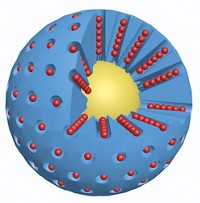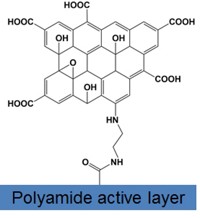Advertisement
Grab your lab coat. Let's get started
Welcome!
Welcome!
Create an account below to get 6 C&EN articles per month, receive newsletters and more - all free.
It seems this is your first time logging in online. Please enter the following information to continue.
As an ACS member you automatically get access to this site. All we need is few more details to create your reading experience.
Not you? Sign in with a different account.
Not you? Sign in with a different account.
ERROR 1
ERROR 1
ERROR 2
ERROR 2
ERROR 2
ERROR 2
ERROR 2
Password and Confirm password must match.
If you have an ACS member number, please enter it here so we can link this account to your membership. (optional)
ERROR 2
ACS values your privacy. By submitting your information, you are gaining access to C&EN and subscribing to our weekly newsletter. We use the information you provide to make your reading experience better, and we will never sell your data to third party members.
Biological Chemistry
Bandage Coating Kills Bacteria Using Graphene And Hydrogen Peroxide
Materials Science: Graphene quantum dots catalyze the decomposition of hydrogen peroxide into potent bacteria-killing hydroxyl radicals
by Melissae Fellet
June 10, 2014

A bandage loaded with graphene quantum dots and a small amount of hydrogen peroxide significantly reduces the amount of bacteria in wounds on mice (ACS Nano 2014, DOI: 10.1021/nn501640q). The coating might be used to disinfect wounds without the use of antibiotics, the researchers say.
Antibiotic-resistant bacteria are a growing public health problem worldwide. Hydrogen peroxide can kill bacteria in wounds without causing resistance, but the concentrations needed—up to 1 M—can also harm healthy cells. Researchers have tried using metal oxide nanomaterials to catalyze the decomposition of hydrogen peroxide into hydroxyl radicals, a more potent germicide than intact peroxide. That would allow researchers to use a lower concentration of hydrogen peroxide. But nanoparticles made of materials such as vanadium oxide and iron oxide can themselves be toxic to healthy cells.
Xiaogang Qu, at the Changchun Institute of Applied Chemistry, in China, and his colleagues wanted to use a safer nanomaterial to break down peroxide: graphene quantum dots. Studies in mice have shown that carboxylated graphene quantum dots, for example, have no appreciable toxicity (ACS Nano 2013, DOI: 10.1021/nn402043c).
To test the effectiveness of the carbon nanomaterials, the researchers added carboxylated graphene quantum dots to liquid suspensions of two types of bacteria, gram-negative Escherichia coli and gram-positive Staphylococcus aureus. Then they determined the amount of peroxide needed to kill 90% of graphene-treated and untreated cells. Compared to the peroxide levels needed to kill untreated cells, the amounts required for treated cells were 90% lower for both types of bacteria.
The researchers then prepared bandages with this antibacterial nanomaterial. They soaked a cotton pad in graphene quantum dots and then added 100 μM hydrogen peroxide to the pad. They placed these bandages on wounds on the backs of mice. As a control, they treated wounds on other mice with bandages containing just saline. After three days, wounds on mice treated with the nanomaterial bandage had one ten-thousandth as many bacteria compared to mice treated with a saline bandage.
Despite the promising results, long-term toxicological tests of graphene quantum dots are needed before a bandage like this can be used on people, says Aiguo Wu of the Ningbo Institute of Materials Technology & Engineering, in China. Wu also thinks these bandages should be tested on other bacteria, like ones resistant to penicillin.
Yuan Chen of Nanyang Technological University, in Singapore, thinks using graphene quantum dots as a catalyst to activate hydrogen peroxide is a novel idea. He wonders if they could be used to activate other antibacterial agents as well.





Join the conversation
Contact the reporter
Submit a Letter to the Editor for publication
Engage with us on Twitter